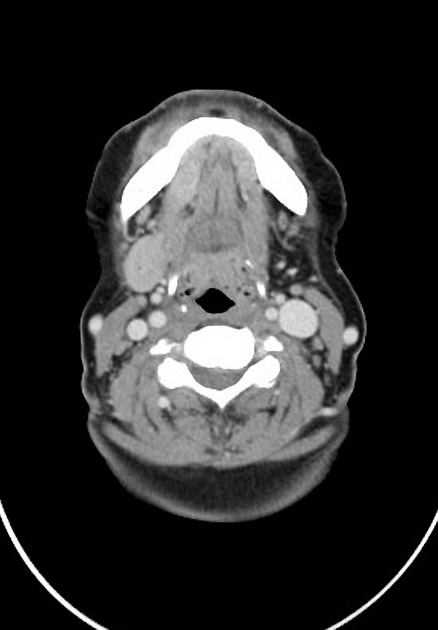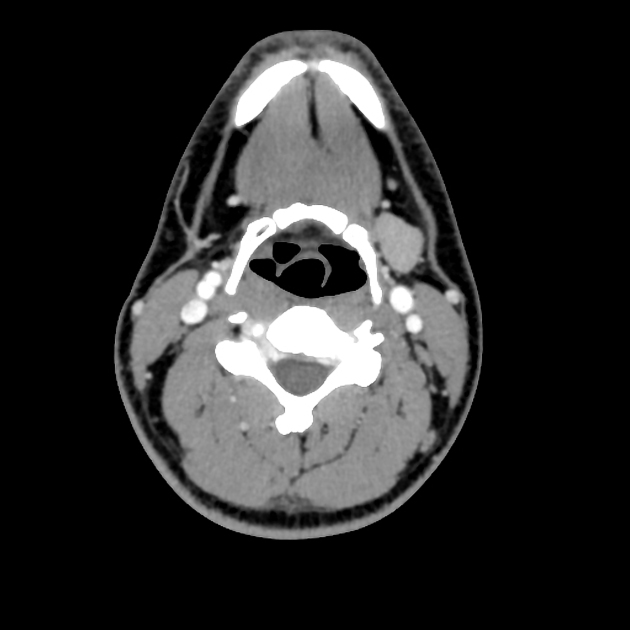Submandibular gland agenesis, also known as aplasia, is the absence of one or both of the submandibular glands and is rare.
On this page:
Epidemiology
Only forty cases of submandibular gland agenesis had been reported in the English literature up to 2014 3.
Associations
It has been found that aplasia of multiple major salivary glands can be present in those with anomalies of development of the ectodermal tissues of the first and second branchial arches, this includes conditions such as lacrimo-auriculo-dento-digital syndrome and mandibulofacial-dysostosis (Treacher Collins syndrome).
However unilateral absence of a single submandibular gland is thought to be an isolated anomaly in embryogenesis 1.
Clinical presentation
Sometimes unilateral submandibular gland agenesis presents due to a palpable neck mass which represents the contralateral hypertrophied submandibular gland. Other times patients have been asymptomatic and the finding has been entirely incidental. In a couple of published cases the patients presented with pain and a dry mouth, a.k.a. xerostomia 1.
It is thought that the compensatory hypertrophy of other salivary glands in other cases has meant that the patient has not noticed any reduction in saliva.
Radiographic features
Absence of one or both of the submandibular glands is demonstrated on nuclear medicine, sialography, ultrasound, CT and/or MRI. In place of the normal gland is usually just fat. Compensatory hypertrophy of the remaining gland on the contralateral side is usually found 1.
Treatment and prognosis
In most cases no treatment is necessary. Occasionally, therapy is required for the xerostomia and dental caries that may result 2.






 Unable to process the form. Check for errors and try again.
Unable to process the form. Check for errors and try again.